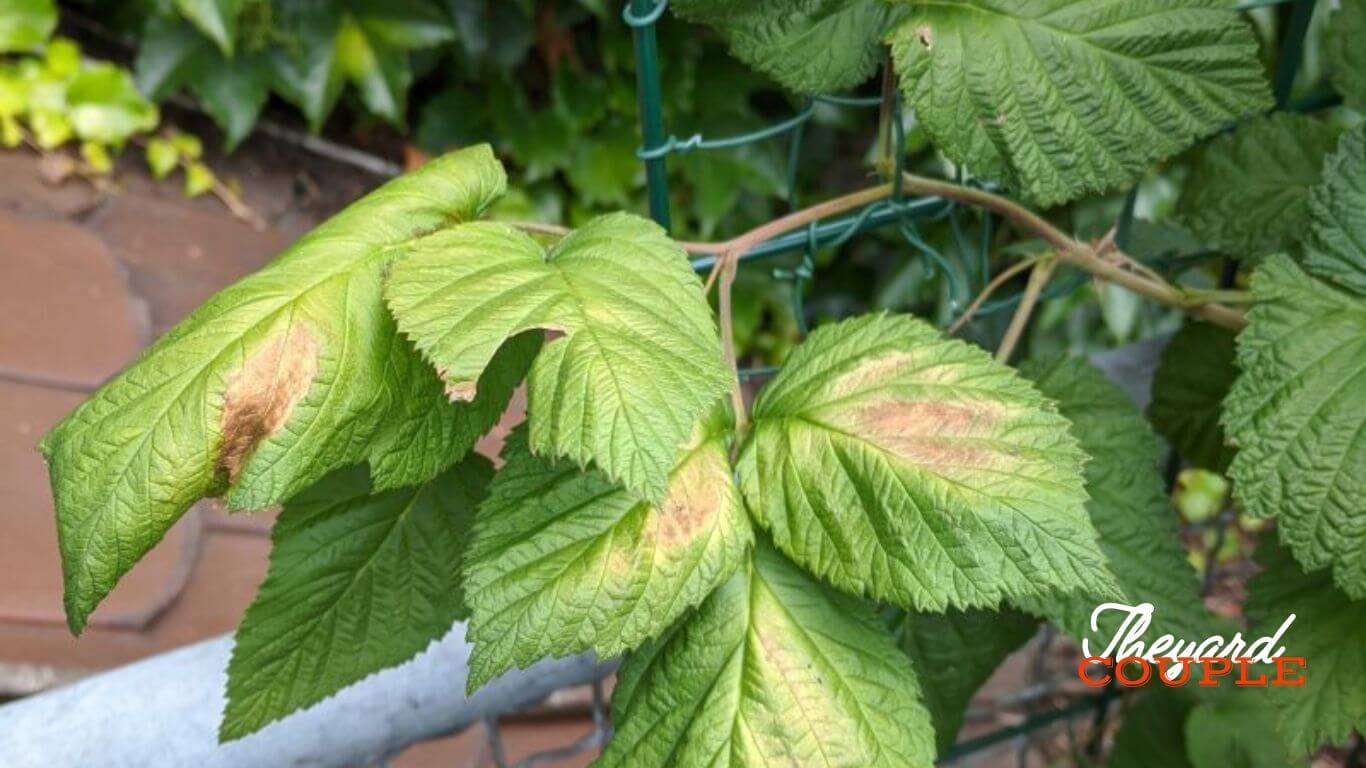Healthy raspberry plants enhance your garden’s aesthetic appeal and provide delicious and nutritious berries for your family. Their lush green leaves and vibrant red fruits can transform any garden space into a visual delight. However, it can be a concern when brown spots on raspberry leaves appear. But wait, why are raspberry leaves turning brown?
Related: How to Plant Raspberries from Seeds
7 Reasons Raspberry Leaves Are Turning Brown

As mentioned before, raspberry leaves turning brown can cause concern to garden enthusiasts. However, understanding and dealing with the underlying causes can be a worthwhile endeavor. Here are the top reasons your raspberry leaves turn brown on the edges.
1. Fertilizer Burn
Fertilizer burn is one of the primary reasons raspberry leaves turn brown. Over-fertilizing or using a fertilizer with a high concentration of nutrients can damage the roots and leaves of the plant.
The excess salts from the fertilizer draw moisture out of the plant tissues, leading to dehydration and brown spots on raspberry leaves.
2. Water Stress
Underwatering
Raspberry plants need consistent moisture to thrive. If you don’t water them adequately, the leaves may turn brown due to dehydration.
Overwatering
Conversely, overwatering can lead to waterlogged soil, suffocating the roots and causing root rot. This can also result in brown spots on raspberry leaves, with some wilting.
Compare: Why Are My Strawberry Plants Drooping?
3. Fungal Diseases

Various fungal diseases, such as anthracnose and spur blight, can cause raspberry leaves to turn brown. These diseases often start with small brown spots that gradually expand, eventually causing the leaves to wilt and die.
4. Nutrient Deficiency
A lack of essential nutrients, particularly nitrogen, phosphorus, and potassium, can lead to browning leaves. Deficiencies in micronutrients like magnesium and iron can cause discoloration and poor plant health.
5. Pest Infestation

Pests like spider mites, aphids, and raspberry cane borers can damage the leaves and stems of raspberry plants, leading to browning and wilting. These pests feed on the plant sap, weakening the plant and making it more susceptible to other issues.
Read also: Clever Flame Seedless Grapes Growing Strategies
6. Environmental Stress
Raspberry plants can suffer from environmental stresses such as extreme temperatures, strong winds, and poor soil conditions. High temperatures and strong winds can cause excessive transpiration, leading to brown, crispy leaves.
7. Chemical Exposure

Exposure to herbicides and other chemicals can cause chemical burns on raspberry leaves. Drift from nearby herbicide applications or accidental spraying can damage the leaves and lead to browning.
Also read: 8 Reasons Your Strawberry Leaves Are Turning Red
Raspberry Leaves Turning Brown FAQs
Q: Can I save my raspberry plant if the leaves have turned brown?
A: You can save your raspberry plant by identifying and addressing the underlying cause of the browning. This may involve adjusting your watering practices, treating for pests or diseases, or modifying your fertilization routine.
Q: How often should I water my raspberry plants?
Raspberry plants typically need about 1-2 inches of water per week. It’s important to keep the soil consistently moist but not waterlogged.
Q: What is the best fertilizer for raspberry plants?
A: A balanced fertilizer with equal parts nitrogen, phosphorus, and potassium is ideal for raspberry plants. Avoid over-fertilizing and follow the recommended application rates.
Q: How can I prevent fungal diseases in my raspberry plants?
A: To prevent fungal diseases, ensure proper spacing between plants for good air circulation, avoid overhead watering, and remove any infected plant material promptly.
My Final Thoughts on Raspberry Leaves Turning Brown
Your raspberry leaves turning brown is not an accident. As you can see, several reasons lead to the raspberry leaves turning brown, including fertilizer burn, pest infestations, nutrient deficiency, watering issues, environmental stress, and chemical exposure.
By understanding and addressing the underlying causes, you can restore the health and vitality of your raspberry plants. Regular monitoring, proper care, and timely interventions will help ensure your garden remains a lush and productive oasis.

